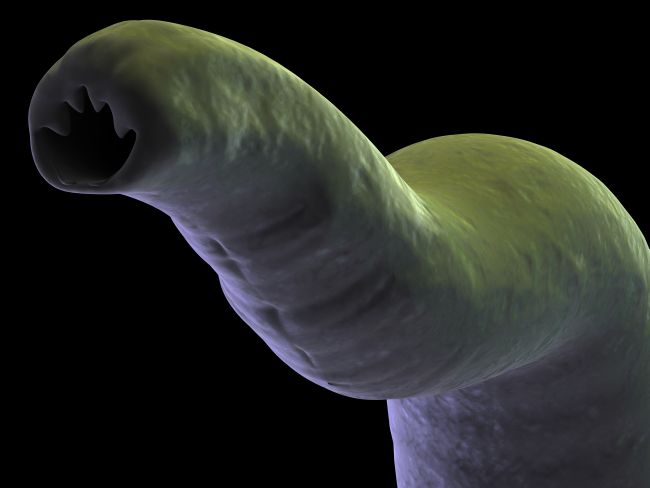
One of the most common health problems that felines and canines face, is that of worms. These pesky parasites use the animal’s body as a host, and can cause horrible health complications, sometimes resulting in death. There are primarily five kinds of worms that affect dogs and cats, including roundworms, hookworms, tapeworms, heartworms, and whipworms. Each parasite appears and behaves differently, and some are quite difficult to diagnose. Look at the list below to better understand the distinctions between worms and how they affect a pet’s body and general health.
Kinds of Worms
Roundworms: This is a common parasite that often infects young puppies who become hosts prior to birth, or while the dog or cat is nursing. These earth-worm-like creatures, generally live inside their hosts’ intestines, creating digestive difficulties by blocking the intestinal passageways, and preventing the animal from maximally absorbing nutrients. Because they replicate quickly (laying up to nearly 100,000 eggs a day) roundworms require immediate treatment. Unfortunately, roundworms can also infect people who come into contact with contaminated feces. Humans have been known to struggle with health problems in the eyes, lungs, and heart if they do not take the proper precautions such as washing hands after disposing of animal feces, etc.
Hookworms: Another parasite making his home in the small intestine is the hookworm who obtains food by sucking the animal’s blood. The animals can get hookworms through their skin’s surface, or by licking different parts of their bodies. Hookworms can cause low iron, physical weakness, and routinely inflict anemia in kittens. Humans also ought to be cautious about these parasites, since we are susceptible when walking barefoot on the ground or eating unwashed produce. Fortunately, hookworms can be treated with the regular administering of de-worming medications.
Tapeworms: Tapeworms are flat, segmented worms that attach themselves to the wall of their host’s intestines. Dogs can get tapeworms by licking themselves, or by swallowing fleas which often carry the parasite, while cats most often become infected by eating an immediate host such as a rat or mouse carrying the fleas. When the segmented parts of the tape worm break off, these are evident in the animal’s stool or anus. Although humans can get tapeworms, they are not passed along through their pets.
Heartworms: The heartworm is the most dangerous parasite of them all, and is experienced very differently in dogs than they are in cats. By infecting animals through mosquito bites, heartworms travel into the heart and arteries of their host, growing up to 14 inches long. Here the worms can cause fatal blood clots, and negatively affect the heart’s ability to function, increasingly the likelihood for heart failure. Though heartworm treatments are not as effective in felines, heartworm-preventing medication injections can potentially save a dog’s life.
Whipworms: Dogs and cats often get worms by running around contaminated areas (such as paths, roads, lawns and streets or other places where there might be fecal matter), by ingesting the larvae, by licking the infected areas, or grooming themselves. The whipworms then lodge themselves midway between the small and large intestines, and feed on the host’s lifeblood. Fortunately, they tend to be less threatening to the animal than other kinds of worms, as they congregated in the intestines in small numbers. Giving the pet an oral de-worming pill regularly should keep these bugs at bay.
Unfortunately, there are other kinds of worms as well: eyeworms, lungworms, protozoans, trematodes, threadworms, and stomach worms, etc., but these five kinds listed tend to be the most common.

